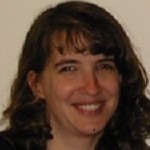
Beth Chance (Cal Poly, San Luis Obispo)
Abstract
Oftentimes, the introductory statistics course can feel like a collection of unrelated topics to novice students. Joe Ward and others have long advocated centering the introductory statistics course around modeling. With improvements in the accessibility and effectiveness of new technology tools for younger students, recent materials in introductory statistics have encouraged a refocus on statistical modeling (e.g., Kaplan, Gelman, CourseKata, Catalysts for Change). I agree with this need, but confess I have not yet fully adopted these approaches. However, rather than thinking of instruction on modeling as introducing a new topic or reframing the entire course, perhaps starting with statistical models can provide an opportunity to show students a more unified framework of statistical thinking. In this talk, I will illustrate some small steps that can be taken that don’t require extensive course revisions, new terminology, or mathematical formulas, but focus on helping students first understand the idea of a model. These ideas can be integrated through several topics in the introductory course and then leveraged in later topics and follow-up courses. I will also discuss comparisons we are making in helping students visualize and critique models, and whether such small steps appear to improve students' understanding of larger statistical ideas. Particular focus will be given to data-generating processes, using models to understand data, and simulation models, as well as what we can learn from other disciplines.
Bio Sketch:
Beth Chance is Professor of Statistics at Cal Poly-San Luis Obispo. She is co-author of the Workshop Statistics series, Investigating Statistical Concepts, Applications, and Methods, Introduction to Statistical Investigations and Intermediate Statistical Investigations, all of which adopt an active learning approach to introductory statistics. She has received NSF grants related to innovations in statistics education, helped develop the Rossman/Chance applet collection, and has been involved with the AP Statistics program for many years. She is a Fellow of the American Statistical Association, and recipient of the ASA’s Waller Education Awards, and the Mu Sigma Rho Statistical Education Award.
Recording
https://www.causeweb.org/cause/uscots/uscots25/recordings-archive
